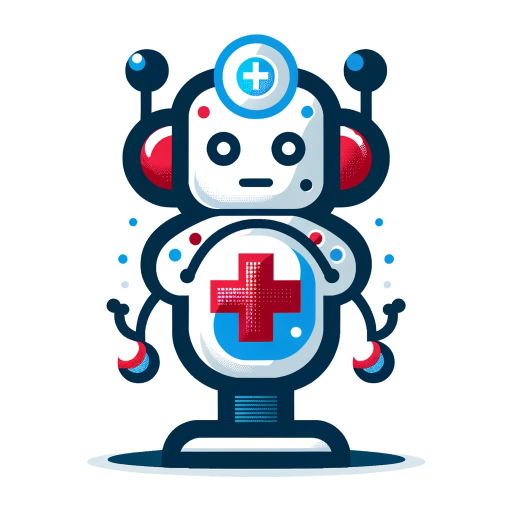Powerautomate-cloud-based task automation tool.
Automate your tasks with AI-powered efficiency.
Hello Sir, what are we building today?
Related Tools
Load More
PowerApps Pro
Accurate Power Platform expert. Trained on 86,453 pages of Power Apps, Power BI, and Power Automate documentation. Also trained on Power Platform Licensing.

Power Automate Helper
Step-by-step Power Automate guide with efficiency tips.

PowerShell
⭐️ 4.5ㆍHighly sophisticated PowerShell scripting copilot, with a focus on efficient, scalable and high-quality production code.

Apps Script
Ready to simplify your Google Apps Script (JavaScript) coding tasks? Meet the Google-AppsScript, your dedicated code solution specialist for Google Sheets, Google Docs, and more.

Power Apps Developer
Expert Power Apps Developer and troubleshooter for your Projects. Trained for Model Driven Apps and Canvas Apps
Power Automate Helper
Expert in Power Automate flow development and troubleshooting
20.0 / 5 (200 votes)
Introduction to Power Automate
Power Automate, previously known as Microsoft Flow, is a cloud-based service developed by Microsoft. It allows users to create automated workflows between their favorite apps and services to synchronize files, get notifications, collect data, and more. Power Automate is designed to streamline repetitive tasks and processes, enabling users to focus on more strategic work. For example, a user can set up a flow to automatically save email attachments to OneDrive and notify their team in Microsoft Teams, reducing manual effort and increasing productivity.

Main Functions of Power Automate
Automated Workflows
Example
Email to SharePoint
Scenario
A business receives several emails daily with attachments that need to be stored in a specific SharePoint folder. Power Automate can be configured to automatically move these attachments from the email to the designated SharePoint folder, saving time and ensuring consistency.
Scheduled Workflows
Example
Daily Report Generation
Scenario
A manager needs to generate a daily report from a CRM system and email it to the sales team. Power Automate can schedule this task to run every day at a specific time, pulling data from the CRM, compiling it into a report, and sending the email automatically.
Instant Flows
Example
Button Click Notification
Scenario
An employee needs to notify their supervisor when a task is completed. Power Automate allows the creation of a button in the mobile app that, when pressed, sends an instant notification to the supervisor with relevant details about the completed task.
Ideal Users of Power Automate
Business Professionals
These users benefit from automating routine tasks such as data entry, report generation, and email management. Power Automate helps them save time and reduce errors, allowing them to focus on higher-value work.
IT and Operations Teams
These teams use Power Automate to streamline and manage internal processes, such as system monitoring, incident reporting, and data synchronization between systems. It reduces manual effort and ensures operational efficiency.

How to Use Powerautomate
Step 1
Visit aichatonline.org for a free trial without login, also no need for ChatGPT Plus.
Step 2
Sign up with your email to create an account, if not already registered.
Step 3
Navigate to the Powerautomate dashboard to explore various templates and features available for automation.
Step 4
Select a template or start a new automation flow by choosing triggers and actions that suit your business needs.
Step 5
Configure the chosen flow, test it to ensure it works correctly, and then activate it for continuous operation.
Try other advanced and practical GPTs
Fashion Alchemist
AI-powered fashion styling tool.

あいか
Your AI-powered virtual friend

Logo & icon - generator & precise editor
Create precise logos & icons with AI.

RevOps Guru
AI-powered insights for Revenue Operations.

Medical Assistant
AI-Powered Medical Insights at Your Fingertips

Master Interview
AI-Powered Interview Preparation Tool

BioStats Tutor
AI-powered biostatistics analysis for health sciences.

Script Rewriter
AI-powered script rewriting made easy.

Reflective Canvas Pro
AI-Powered Image Creation and Upscaling
Shopware API Navigator
AI-Powered Navigator for Shopware API

mybest GPT
Discover the Best with AI-Powered Recommendations
Blog Post Writing Magician
AI-Powered Blog Creation Made Easy

- Task Automation
- Workflow Management
- Business Processes
- Notifications
- Data Synchronization
Detailed Q&A about Powerautomate
What is Powerautomate?
Powerautomate is a cloud-based service that allows users to create automated workflows between various apps and services to synchronize files, get notifications, collect data, and more.
How can Powerautomate improve business efficiency?
Powerautomate can automate repetitive tasks, streamline business processes, reduce errors, and free up employee time for more critical tasks, thereby improving overall efficiency.
What types of tasks can be automated with Powerautomate?
Tasks such as data entry, email notifications, document approvals, social media posts, and data synchronization between different applications can be automated using Powerautomate.
Is coding knowledge required to use Powerautomate?
No, Powerautomate is designed to be user-friendly with a drag-and-drop interface, allowing users to create flows without any coding experience. However, advanced users can leverage custom scripts and APIs.
How secure is Powerautomate?
Powerautomate adheres to Microsoft's security and compliance standards, offering features like data encryption, user authentication, and compliance with industry regulations to ensure data safety.